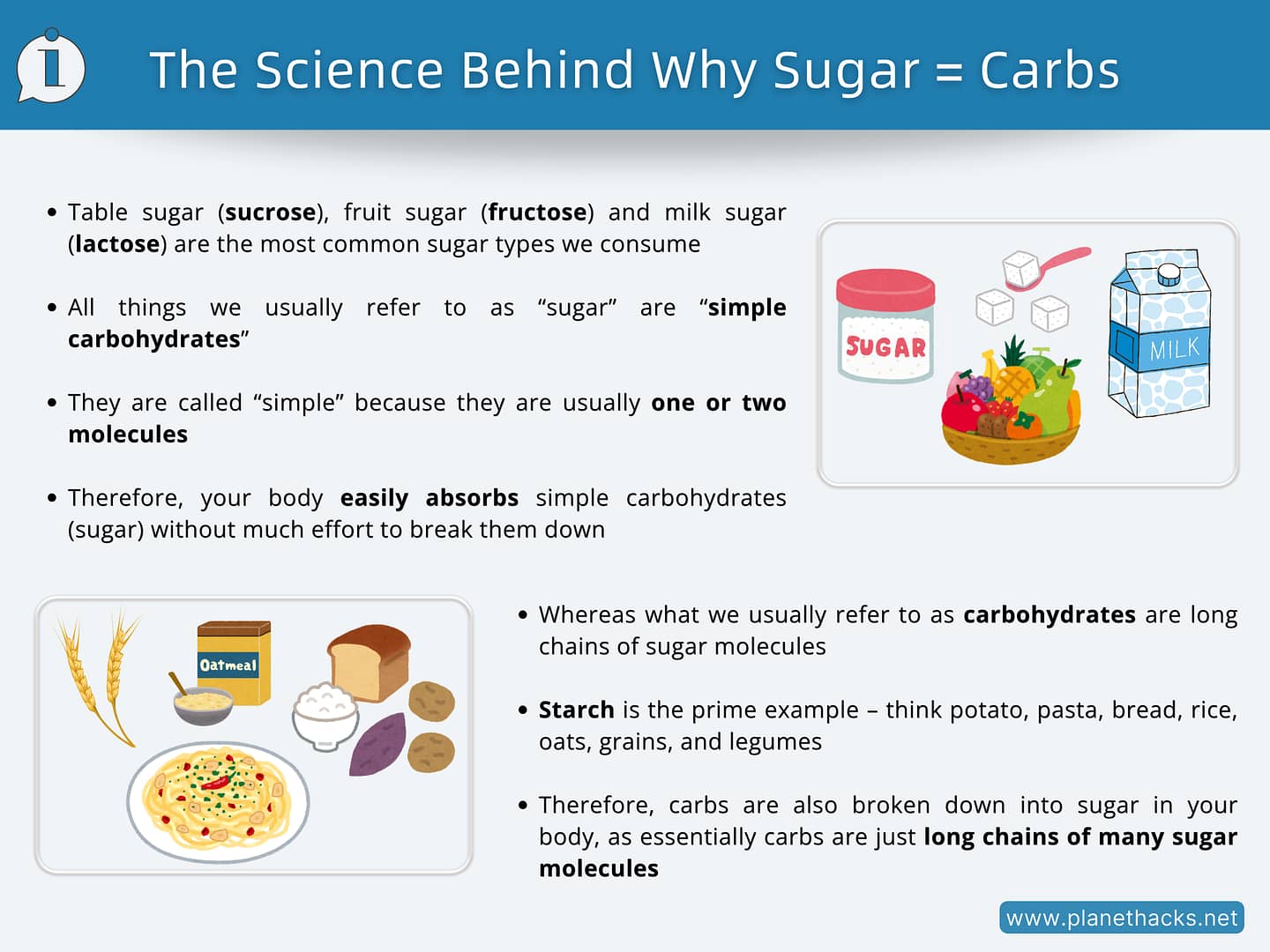Metabolic Flexibility: Your Ultimate Hack To Burn Fat
Metabolic flexibility is not only key to fat-burning but essential for metabolic health. It’s your body’s ability to switch effortlessly between burning sugar or fat as fuel. Discover how this crucial ability helps you shed stubborn pounds, maintain health, and unlock your full metabolic potential through exercise. Skip intro
Table of Contents
Intro
The big question is: Are you metabolically flexible?
In other words, can your body effortlessly switch between using carbohydrates (glucose) and fat (ketones) as its fuel sources?
This ability—switching from carbohydrates, one of our main sources of energy, to fat, our other primary fuel source, and vice versa—is key to optimal health.
Our ancient genetic makeup evolved to help us survive during times of fluctuating food availability, relying on this metabolic flexibility to keep us going.
However, in today’s fast-paced, high-stress world, many people are losing this vital flexibility, leading to a rise in metabolic syndromes.
If you’re finding it difficult to lose weight, no matter what diet you follow, or can’t seem to shed that last bit of stubborn fat, training your body to become metabolically flexible might be the game-changing solution you need.
Metabolic Flexibility
So, first of all, what is Metabolic Flexibility?

Metabolic flexibility is the ability of your body to switch between using its two main energy sources—sugar and fat.
It’s all about your body’s knack to seamlessly transition between its two primary fuel sources, to meet energy demands.
Think of it as having the flexibility to switch from WiFi to Hotspot when your signal gets wonky.
This means that once your blood sugar runs out and you also depleted all your “sugar-storage” (glycogen) from your liver and muscle tissue, your body will be able to switch into burning its fat storages instead.
Rather than constantly relying on sugar OR carbohydrate for energy. Terms which we will use interchangeably throughout this article.
See information box below to understand why Sugar = Carbs.

Ancient Blueprint
Metabolic flexibility is all about returning to the ancestral way our bodies were designed to fuel itself.
Human physiology has adapted as a species over hundreds and thousands of years to alternate between its two primary energy sources—sugar or fat.
This makes sense, as up until the agricultural revolution, humans were exposed to external factors for food availability. Such as changing seasons, monsoon season, dry seasons.
Basically, a mix of scarcity and abundance throughout the year. This pattern characterised 99.5% of homo sapiens existence, spanning approximately 84,000 generations.[1]

In these times, our bodies evolved to be versatile energy scavengers.
Whether it was munching on a mammoth steak or surviving on just roots and berries, our ancestors’ metabolism had to be adaptable to ensure they had enough energy to escape predators or pursue their own prey.
As outlined in the Journal of Nutrition & Metabolism, our ancestors had to adapt to “feast-and-famine” cycles, with thriftiness in metabolism becoming an inherent property of ours.[2]
Accordingly, we evolved as a species with dynamic internal factors to these fluctuating conditions, storing fat for times of scarcity.
This adaptability is encoded in your DNA, and your body is still rockin’ that ancestral charm.
However, with the constant availability of high glycemic index snacks at our fingertips and rarely giving our body a break from ingestive behaviour—this survival advantage of ours to store fat as an efficient energy source in modern times has become a driver of disease states called “metabolic syndromes” (see below).
Metabolic inflexibility
Metabolic inflexibility is the result of a lifestyle that doesn’t demand adaptability.
Our body can become bit of a carb-addict when it gets used to a constant influx of carbohydrates. Stubbornly resisting switching to its other main energy source: fat.

This metabolic one-trick pony is what we call metabolic inflexibility.
Leading to metabolic syndromes such as, type 2 diabetes, insulin resistance, cardiovascular disease, non-alcoholic fatty liver disease, and obesity.[3]
Those with metabolic inflexibility are also far more likely to store fat on their internal organs, skeletal muscles, and even the heart. Not only the ‘designated storage organs’ (e.g., adipose tissue and liver).
See, once you have depleted the sugar in your bloodstream, followed by your sugar storage (glycogen) in your liver and muscle tissues, your body should switch over to using its fat storage.
However, those with metabolic inflexibility are in for a tough ride, as it can take weeks, if not months, to train your body to burn fat as its primary fuel source.
This is why it’s so hard not to binge-out during planned diets or fasting.
As perfectly stated by J.Stanton, author of numerous articles on topic:
“If our ability to burn fat for energy is impaired, we’re going to have a hard time losing weight, and we’ll become ravenously hungry when our blood sugar runs out no matter how much fat we have available to burn.” [4]
In contrast, switching over to using your fat supplies should be easy if you are metabolically flexible, allowing you to maintain your energy levels and mood throughout the day. Keep reading to find out how you can achieve this.
Metabolic flexibility isn’t just about switching fuel sources—it also depends on your gut health.
A well-balanced gut microbiome plays a crucial role in digestion, nutrient absorption, and even fat metabolism. If your gut is inflamed or imbalanced, it can contribute to metabolic issues. Gut Health is designed to restore your digestive system and optimise your metabolism from the inside out.
Am I Metabolically Flexible?
If you regularly exercise, incorporate fasting, or practice a low-carb or ketogenic diet, then you most likely are metabolically flexible.[5]
One good way to tell is: how sick do you feel when you skip feeding time?
If you have been on a carb-based diet most of your life, then your body will likely be asking you every few hours for a carb-reload.
This you will know by the twisted nauseating hunger-pang you feel in your stomach, telling you to eat.

With other symptoms being: feeling ‘hangry’, weak, and dizzy. Usually accompanied by mind-numbing headaches and brain fog.
If these symptoms are common, you are likely metabolically inflexible. That is, your body is totally ignoring its other main fuel source: fat.
So what can you do to counter this?
Well, you may want to consider incorporating periodic fasting or trying a low-carb diet.
But to truly yank your body away from its love of carbs as its main energy source, exercise is the key.
Wanting to train your body to burn fat efficiently?
If you’ve spent years relying on carbs, it can be a tough transition. Beyond Fasting guides you through this difficult shift step by step, helping you activate your fat-burning potential without the common struggles of hunger, energy crashes, or brain fog.
Hack Your Metabolism: Exercise
In modern times, the same hormonal responses that allowed our hunter-gatherer ancestors to access their fat storages when needed, can be triggered through exercise.

Specifically, activities that mimic foraging behaviours that our ancestors were naturally adapted to. Such as, foraging, climbing, long walks, hunting, running (quick short sprints, or long-range low to medium impact jogging), hiding, and building shelter.
Studies show just 30-60 minutes of walking, jogging, or resistance training per day over 4-12 weeks can significantly improve metabolic flexibility, increasing fat-burning capacity and decreasing the likelihood of metabolic syndromes like diabetes.[6]
Such activities stimulate our hypothalamus and adrenal glands to produce cortisol and epinephrine.
Cortisol facilitates ketone production from stored fats and helps regulate blood sugar levels. While epinephrine helps supply your muscles and brain with ketone-based energy (energy stored from fat).[7]
By depleting glycogen stores and forcing your body to adapt, it also reinforces metabolic flexibility for sustained energy bursts.
Ultimately, helping your body tap into its fat storages, and become metabolically flexible.
Looking for an exercise programme that taps into these ancestral foraging behaviours?
10X Exercise Program will help you trigger these metabolic adaptations, as it follows the same principles our ancestors unknowingly relied on—short, intense bursts of strength-based movement. This style of training enhances insulin sensitivity, making it easier for your muscles to absorb and utilise glucose efficiently.
Conclusion
Metabolic flexibility is our evolutionary heritage to survive through fluctuating periods of abundance and scarcity. When we fail to tap into this natural blueprint, we burden ourselves with modern-day metabolic diseases.[8]
Incorporating regular, moderate physical exercise, helps maintain metabolic flexibility.
Particularly, activities that mimic mixed-intensity foraging behaviour can help us preserve the same adaptive hormonal responses that served us well in the past.
Therefore, embracing our primal heritage offers a path to success, working with, rather than against, our true nature.
This innate flexibility fuels our energy needs during variable food intake, just as it enabled our ancestors’ survival in lean times.
Disclosure
Mindvalley links in this post are affiliate links, meaning I earn a small commission if you make a purchase—at no extra cost to you. I only recommend courses I personally rate or think you’ll love!




